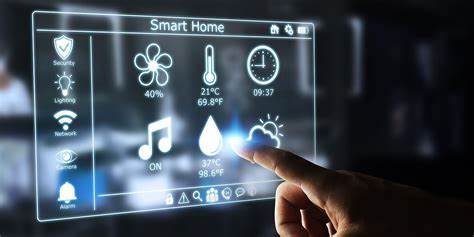Smart home devices have revolutionized the way we interact with our living spaces, promising greater convenience, energy efficiency, and enhanced security. However, beneath the surface of these seemingly benign gadgets lie hidden dangers that can compromise your privacy, security, and even your physical safety. As a seasoned expert in technology and engineering, it’s essential to highlight these risks in detail, especially for those who may be unaware of the vulnerabilities these devices present. In this article, we will dive deep into the hidden dangers of smart home devices and provide actionable insights to help safeguard your digital and physical environments.
The Erosion of Privacy: How Smart Devices Are Watching You
At the heart of every smart home is the promise of increased connectivity and automation. From smart speakers and cameras to thermostats and lights, these devices learn from your behavior, track your preferences, and aim to enhance your living experience. However, the very features that make them convenient also expose a massive privacy risk.
Many of these devices are designed to constantly collect and transmit data back to their manufacturers or third-party services. This data can include sensitive personal information such as your daily routines, conversations, and even your facial features if cameras are involved. While tech companies often assert that this data is anonymized or encrypted, numerous high-profile data breaches have shown that no system is completely safe from hackers. Cybercriminals can exploit weaknesses in device software or cloud-based services to access this data, putting your privacy in jeopardy.
Furthermore, some smart devices listen to you even when you are not actively engaging with them. Virtual assistants like Amazon Alexa or Google Assistant continuously monitor background noise for trigger words. While this is necessary for the devices to function, it also raises concerns about whether these assistants are eavesdropping when they shouldn’t be. If compromised, this data could be used for targeted advertising, identity theft, or worse, leaving you vulnerable to exploitation.
Security Breaches: The Gateway to Your Entire Home
Smart home devices are often interconnected, communicating with each other and through the internet to enhance automation. This interconnectedness is part of the charm, but it also creates a potential nightmare if your devices are hacked. Many homeowners fail to realize that each new device added to their smart home ecosystem could serve as a gateway for attackers to compromise the entire network.
Smart locks, security cameras, and smart thermostats are some of the most common targets for hackers. A compromised device could allow cybercriminals to gain access to your home’s Wi-Fi network and from there, access sensitive information on other connected devices. For example, if a hacker gains control of your smart thermostat, they might use it as an entry point to infiltrate your security camera feeds or your home automation systems, providing them with real-time access to your home.
In some cases, poorly secured smart devices can even be hijacked and used in botnet attacks, where they are deployed to launch massive cyberattacks on websites or networks, all while remaining undetected within your home. The consequences of such breaches can extend far beyond your home, affecting the broader internet infrastructure and even jeopardizing your financial and personal information.
The Overlooked Risk of Unpatched Software Vulnerabilities
One of the most overlooked risks in the world of smart home technology is the constant need for software updates and patches. Smart home devices rely heavily on cloud-based services to function, which means they are constantly being updated to fix bugs, improve performance, and patch vulnerabilities. However, these updates are often released without thorough testing, and at times, new software patches can introduce unforeseen bugs or security gaps.
Not all devices are consistently updated, either. Many manufacturers may stop supporting older models, leaving them vulnerable to known exploits that could have been fixed with a simple update. Devices that aren’t updated regularly become increasingly susceptible to cyberattacks, with some threats going unnoticed for long periods, making it easier for hackers to break into your network.
Moreover, not all smart devices come with the same level of security out of the box. Many cheap or poorly designed devices may use outdated or weak encryption protocols, leaving them open to attacks. Without regular patches and updates, these vulnerabilities can persist, creating significant security risks for the entire home network.
Physical Safety Hazards: More Than Just Convenience
While smart home devices are often designed to improve convenience and efficiency, some can inadvertently introduce physical safety hazards. For instance, connected home appliances like smart ovens, refrigerators, or coffee makers offer convenience but also come with new risks that traditional appliances do not.
Imagine a hacker remotely activating your smart oven or heating element. If left unchecked, this could lead to a fire, particularly if the oven is left unattended. Likewise, a malfunctioning smart appliance could cause a dangerous situation, such as a leak in a smart water heater or a gas-powered appliance. The risk of malfunction is not confined to simple software errors—tampering by cybercriminals can also lead to catastrophic consequences.
Another overlooked risk is the reliance on automation for tasks that traditionally required human oversight. For example, smart home systems designed to automate lighting, heating, and appliance use might malfunction, resulting in excessive energy consumption or even physical damage to your home due to electrical faults. These risks are exacerbated when devices are integrated into more complex home systems, creating a situation where a single point of failure can lead to a cascade of problems.
The Cascading Effect of Interconnected Vulnerabilities
Perhaps the most insidious risk of all is the interconnected nature of smart home devices. In a traditional home, a malfunctioning device is usually an isolated issue. However, in a smart home, one compromised device can serve as a gateway to your entire network of connected devices, creating a domino effect that can compromise your home’s security and functionality.
Consider a scenario where a hacker gains access to a seemingly innocuous device like a smart fridge. From there, they can use it as a stepping stone to access other devices, such as your smart lock, security camera, or even your thermostat. Once inside your home network, attackers can move laterally to other devices, gaining full control over your home’s ecosystem. This interconnectedness creates a situation where a single vulnerability in one device could cascade into a much larger issue, leaving your home exposed to a wide range of potential attacks.
This is particularly concerning for users who continuously add new smart devices to their homes without fully understanding the security implications. As the number of connected devices increases, so too does the potential for breaches, which is why it’s crucial to maintain tight security protocols and regularly audit your devices.
Protect Your Smart Home with Awareness and Action
Smart home devices are undeniably convenient, but they come with hidden dangers that cannot be ignored. From privacy breaches to security vulnerabilities, the risks associated with these devices are substantial, and often underestimated by users. It’s important to stay informed, secure your devices, and regularly update your systems to minimize these risks.
As technology continues to evolve, the line between convenience and danger blurs. By taking a proactive approach to securing your home and understanding the risks, you can enjoy the benefits of smart home technology without compromising your privacy or safety. Remember, in today’s connected world, knowledge is power, and the more you understand about the potential dangers of smart devices, the better equipped you’ll be to protect yourself and your family.
Stay Informed and Protect Your Digital Life!
At epci.ng, we provide the latest updates on Energy, Construction, Engineering, and Cryptocurrency. Join us on WhatsApp or Telegram for real-time news and insights. Have a report or article? Send it to report@epci.ng. Follow us on X (Twitter), Instagram, LinkedIn, and Facebook for more industry insights. Stay ahead of the curve in an ever-evolving world of technology.







Leave feedback about this